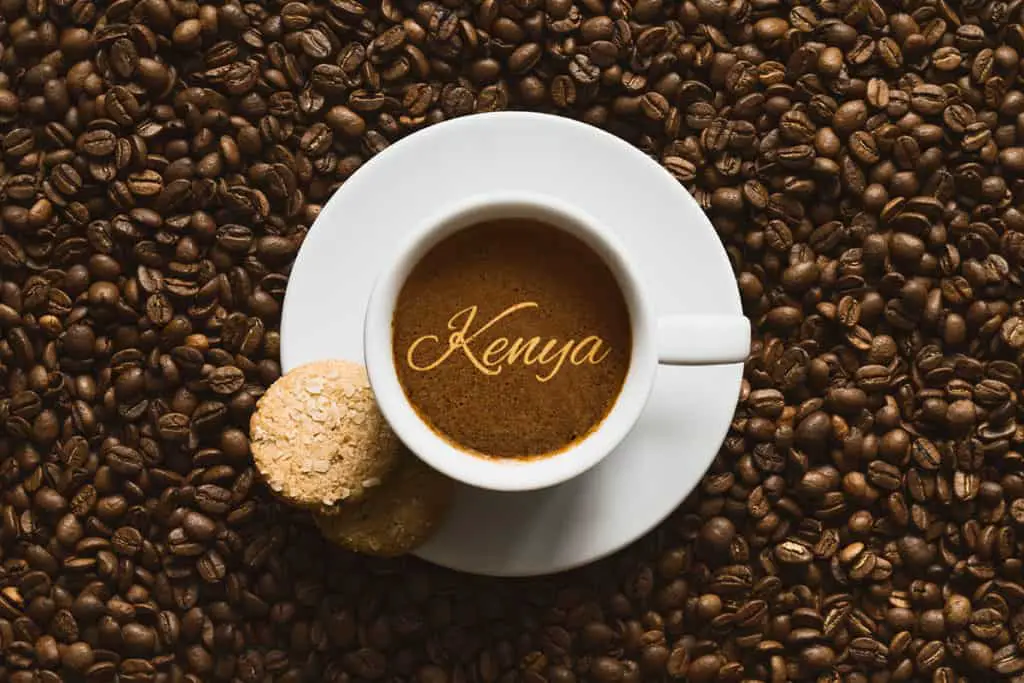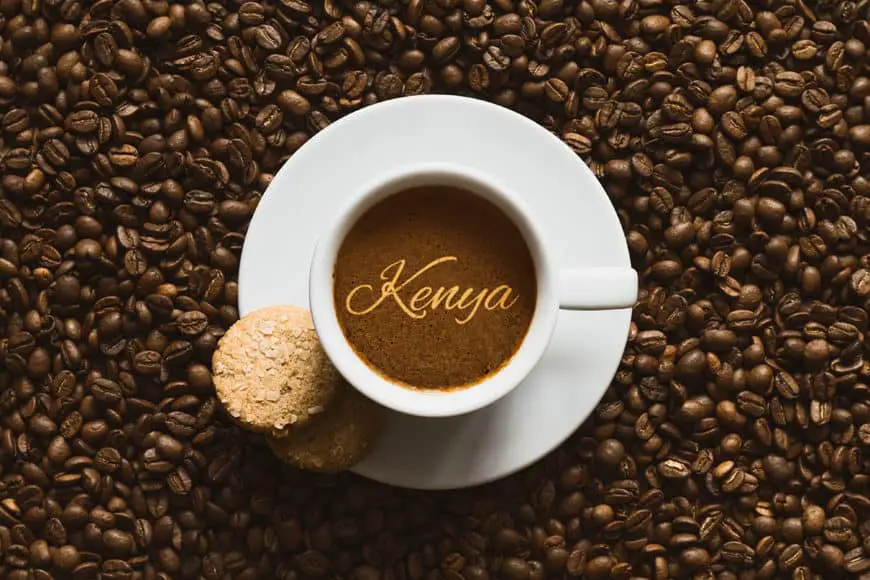
Kenyan coffee grabs attention with its bold flavors, deep history, and unique growing regions. From colonial roots to modern challenges, it’s a story of quality and grit. This guide covers where it comes from, how it’s grown, processed, and why it tastes so good. We’ll also check out recent trends, sustainability efforts, and tips to brew a killer cup. Whether you’re a coffee geek or just curious, here’s the full scoop on Kenyan coffee.
Why Kenyan Coffee Matters
Kenyan coffee is a big deal—economically and culturally. It supports over 6 million people, from small farmers to cooperative workers, and pulls in millions in export cash. Its bold, acidic flavor, packed with dark chocolate, black currant, and citrus notes, comes from high-altitude volcanic soils. Careful processing keeps the quality high. Even with challenges like shrinking farmland and climate shifts, Kenyan coffee holds its spot as a global favorite for its consistent, rich taste.
History of Coffee in Kenya
Coffee hit Kenya in 1893 when French missionaries brought trees from Reunion Island, not Brazil as some say. Early farms near Nairobi started small, but British colonial rule shaped the industry. Under the East Africa Protectorate, white settlers controlled coffee, banning native Kenyans from growing it and using them as cheap labor. The 1933 Coffee Act set up the Kenyan Coffee Board to handle sales and marketing, with auctions kicking off in 1935. A Coffee Marketing Board ran from 1946 to 1971.
The Mau Mau Uprising (1952–1960) and independence in 1963 flipped the script. The 1950s Swynnerton Plan let Kenyan farmers grow coffee, sparking a smallholder boom. Today, the Coffee Board of Kenya, now the Coffee Directorate under the Agriculture and Food Authority, oversees licensing and policy. A 2001 Coffee Act locked in its role, and 2023 reforms let farmers sell directly to buyers, boosting local control. Cooperatives now drive the industry, making Kenyan coffee a symbol of empowerment.
Where Coffee Grows in Kenya
Kenyan coffee thrives in high-altitude spots with volcanic soils, 15–24°C temps, and steady rain. Key regions include:
- Central Highlands: Nyeri, Kirinyaga, Embu, and Mount Kenya’s slopes. These churn out top-grade Arabica with bright acidity.
- Rift Valley: Kericho, Bomet, Kiambu, Nakuru. Known for steady quality and big yields.
- Western Kenya: Bungoma, Mount Elgon. Smallholder cooperatives rule here.
- Eastern Kenya: Meru, Tharaka Nithi. Mix of small and medium farms.
- South Western Kenya: Kisii, Nyamira. Often mixed with tea or maize crops.
At 1,400–2,000 meters, these areas give Kenyan coffee its intense, full-bodied flavor, sometimes called “Colombia mild” for its punchy profile.
Coffee Production in Kenya
About 150,000 smallholder farmers grow 70% of Kenya’s coffee on 75% of the 119,000 hectares spread across 33 counties. Roughly 6 million Kenyans work in the sector. Large estates, some with irrigation, handle the rest. Production has tanked from 130,000 tonnes in 1987/88 to 51,900 tonnes in 2021/2022, with a forecasted 45,000 tonnes (750,000 60-kg bags) in 2024/2025. Urban sprawl and underfunded research for better seeds hurt yields.
Here’s a look at production trends:
| Year | Production (tonnes) |
|---|---|
| 2015/2016 | 37,500 |
| 2016/2017 | 34,500 |
| 2017/2018 | 36,500 |
| 2018/2019 | 38,500 |
| 2019/2020 | 40,500 |
| 2020/2021 | 34,500 |
| 2021/2022 | 51,900 |
| 2024/2025 (forecast) | 45,000 |
Small farmers often mix coffee with maize or bananas. Estates use rainfed or irrigated systems. Shade-grown coffee is catching on to fight climate change, with research picking the best shade trees.
Coffee Seasons and Processing
Kenya harvests coffee twice a year—April to June and October to December—tied to rainy seasons. Weekly auctions at the Nairobi Coffee Exchange follow. About 90% of coffee is wet-processed at washing stations, where cherries are sorted, pulped, fermented, washed, and dried. This keeps flavors crisp and acidic. The other 10% is dry-processed into “mbuni,” a heavier coffee.
Processing steps include:
- Sorting: Pick out ripe cherries, ditch the bad ones.
- Pulping: Strip ripe cherries and sort by density.
- Fermentation and Washing: Beans ferment 12–36 hours, then wash off mucilage.
- Drying: Beans dry on raised beds for 7–14 days.
- Milling: Hull, polish, and sort beans by size, density, color.
Grading uses screen sizes:
- E (screen 20)
- AA (screen 18, top grade)
- AB (screen 16)
- C (screen 15/10), T, TT, MH/ML
Hand-sorting and cupping catch flaws. Cuppers taste hundreds of samples daily, checking aroma and flavor.
Coffee Flavor
Kenyan coffee pops with bold, complex flavors. It’s got high, “winey” acidity, a full body, and notes of dark chocolate, black currant, citrus, and sometimes jasmine-like florals. Its high-altitude volcanic soils create a clean, crisp taste, richer than Ethiopian Harrar. Kenyan AA, the top grade, is loved for its balance, making it great for single-origin brews or blends.
Coffee Marketing and Exporting
Kenyan coffee sells through the Nairobi Coffee Exchange’s weekly auctions, priced per 50-kg bag. A 2023 reform cut out middlemen, letting farmers deal directly with buyers for 90% of sales, though payment delays are an issue. Top exporters include Dormans and Kenya Co-operative Coffee Exporters. In 2017/2018, Germany, the U.S., Belgium, Korea, and Sweden were big buyers, with exports hitting $229.5 million. By 2022/2023, earnings dipped to $127.8 million, but 2024 saw a price rebound.
Sustainability in Kenyan Coffee
Sustainability is changing Kenya’s coffee game. Farmers are using regenerative agriculture to boost soil health and fight climate shifts. Organic certification is growing, especially for Europe and U.S. markets. The Kenya Coffee Platform pushes for better farmer pay and eco-friendly practices. Challenges include a 30% drop in coffee farmland since 1990 and limited research funding.
How to Brew Kenyan Coffee
Kenyan coffee shines in methods that highlight its acidity and body. French Press or Aeropress pulls out floral and fruity notes. Cold brewing—steeping grounds in cold water for 18–24 hours—keeps it sweet. On Kenya’s coast, Swahili men brew “kahawa chungu” with ginger and cardamom over charcoal. Kenyans lean toward tea, but Nairobi’s coffee shops are growing, with the market expected to hit $434 million by 2025.
Final Thoughts
Kenyan coffee is all about quality and resilience. From missionary farms to cooperative power, it delivers bold, complex flavors that coffee fans love. Despite urban growth and climate hurdles, sustainability and reforms keep it strong. Brew a Kenyan AA, taste its black currant zing, and enjoy a legacy as rich as the land it grows on.

